Matthew Bourne's New Adventures: celebrating LGBTQ+ relationships through the years
The celebrated dance company sets out moments throughout its history where it has celebrated Pride and all it stands for
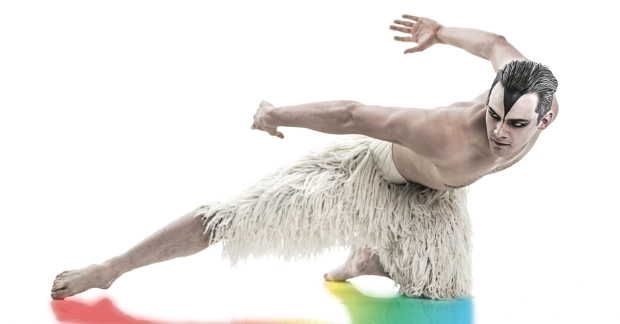
© Johan Persson
Today marks 50 years since the Stonewall riots, which kicked off the first major demonstrations for gay rights in America. Fifty years ago, on 28 June 1969, police raided the Stonewall Inn in New York City's Greenwich Village, but bar patrons – gay men and drag queens – fought back, a spontaneous incident which is now marked as the beginning of the gay rights movement in the United States. To mark that and the month of Pride we asked Matthew Bourne's dance company New Adventures to highlight how its shows have a history of celebrating LGBTQ+ relationships.
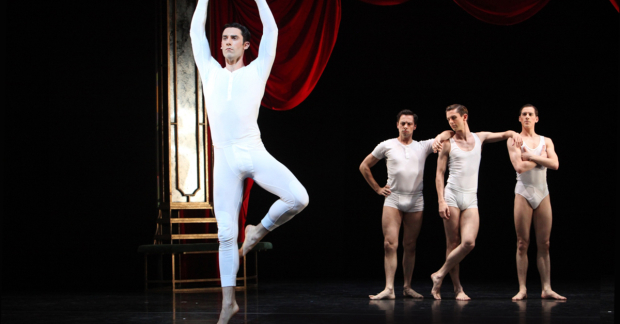
(© Roy Tan)
New Adventures has always been brave in ambition, maverick in our story telling and eager to shake things up. Gay relationships and homoerotic subject matter have featured in our shows since the very beginning in 1987. At that time Section 28 was still live in the UK, stating that a local authority "shall not intentionally promote homosexuality or publish material with the intention of promoting homosexuality" and it was still criminal to be gay on the Isle of Man. Below are just a few instances of where that didn't stop us.
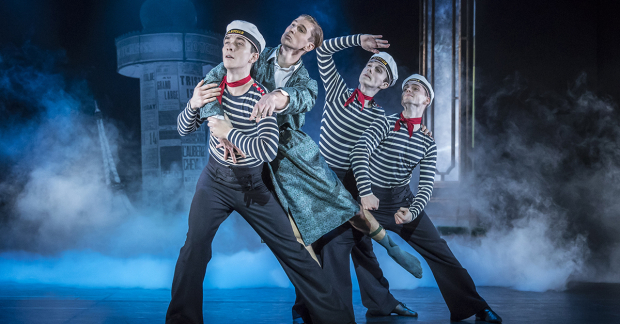
© Johan Persson
The Infernal Galop
1989 saw one of Matthew Bourne's first pieces created, The Infernal Galop, a satirical work about English perceptions of the French, which features a scene in a pissoir with three men curiously eyeing each other up, developing into several saucy fleeting moments throughout with buff sailors and a sensuous merman.

© Johan Persson
Town & Country
Another short piece followed in 1991: Town & Country – both previously seen in Matthew Bourne's Early Adventures in 2017/18. This work features a pair of uptight young gentlemen who find love at first sight in a hotel foyer in a number by Noël Coward entitled, Dearest Love.
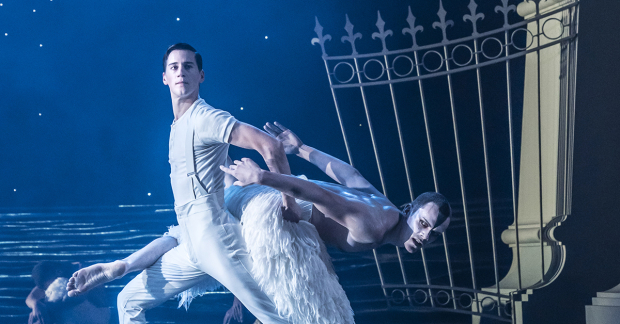
© Johan Persson
Swan Lake
1995 became a monumental year for New Adventures with Swan Lake premiering initially to mixed reviews with the classic corps-de-ballet of female dancers in tutus being replaced by bare-chested males in swan pants. This production quickly became our most legendary work and revolves around a fantastical but heartfelt love story between The Prince and Swan / Stranger, both played by men.
Twenty five years later, its story of acceptance and the freedom to love whoever you wish is celebrated regularly as a family Christmas outing, showing how much has changed since its first performance.
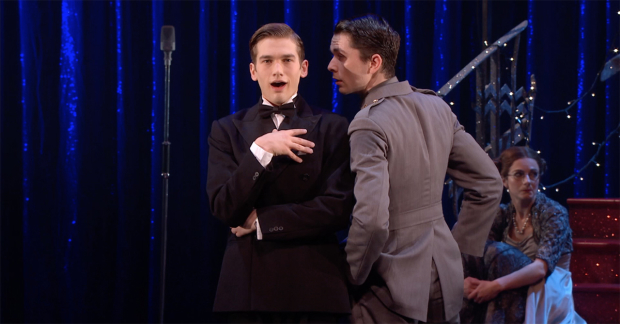
Cinderella
Fast forward two years and Matthew Bourne re-imagines the classic fairy tale of Cinderella, which is set in the 1940s during the London Blitz. Cinderella's love interest in this version is not a traditional prince but an RAF pilot and her step brother Malcolm also falls in love with a dashing American GI named Buster.
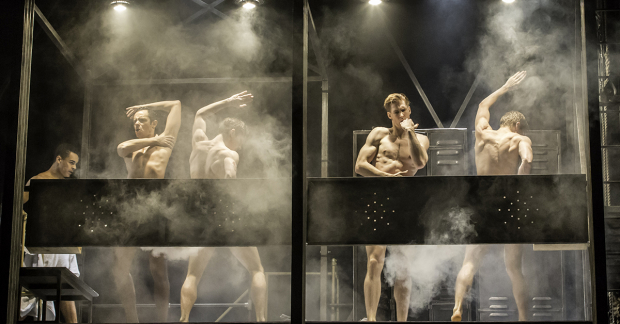
© Johan Persson
The Car Man
Almost 20 years ago a raunchy and raw twist on George Bizet's opera Carmen is created by Bourne in the form of The Car Man. Given five stars by The Observer and described as ‘a sizzling adventure' this dance production, first seen May 2000 is rife with homo-erotic themes. The protagonist Luca is bisexual – he has an affair not only with the heroine Lana but with the local odd-job man Angelo! It also features an out gay couple, two of the mechanics working at Dino's Diner and Garage Marco and Vito.
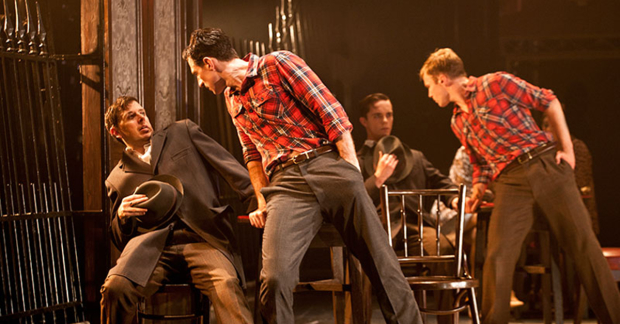
© Simon Annand
Play Without Words
Homo-erotic threads run throughout Bourne's works even when the relationships are less explicit. Pictured is a shot from Play Without Words first performed in 2001 and last seen in 2012. Set in Chelsea, London in 1965, Play Without Words explores the free-loving swinging 60s and its darker, seductive side.

© Bill Cooper
The Picture of Dorian Grey
Free from the censorship laws that Oscar Wilde faced with his story of Dorian Gray, Bourne's version, created in 2008, comments on celebrity culture and the self-obsession of body image. A sexual power struggle ensues between Dorian and Basil, the photographer including some of the most sexually explicit duets of Bourne's career.
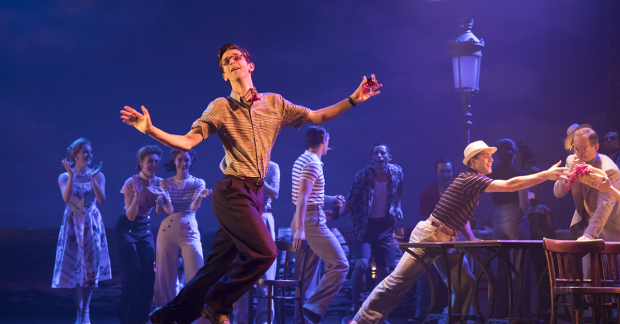
© Johan Persson
The Red Shoes
Arguably, in Bourne's most recent productions gay relationships are seen as a normalised component of representing contemporary times by audience members, a welcome shift in celebrating these communities. In 2016 Matthew Bourne's production of The Red Shoes became our fastest-selling show based on the Powell and Pressburger 1948 film and Hans Christian Andersen's fairy-tale of the same name. A tale of obsession, possession and one girl's dream to be the greatest dancer in the world. Victoria Page lives to dance but her ambitions become a battleground between the two men who inspire her passion. In the midst of this love triangle you may spot a subtle relationship between the Premier Danseur Ivan Boleslawsky and Dimitri (Lermontov Secretary and Company Manager).
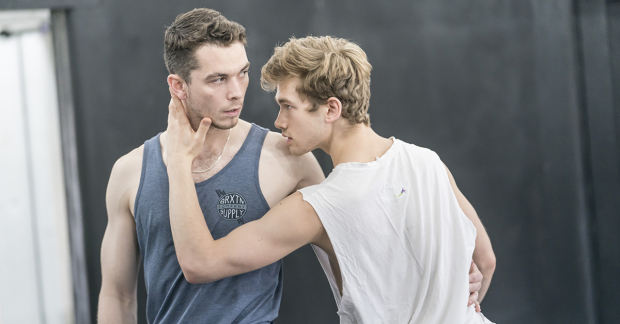
© Johan Persson
Romeo and Juliet
And finally, our latest world premiere production of Romeo and Juliet, currently touring the UK, is a tale bursting at the seams with youthful ideas and creativity. Along with the central story of our Romeo and Juliet, set in the near future in the Verona Institute, we find, along with several same sex couplings, Mercutio with a boyfriend named, Balthasar, whose passionate love affair *SPOILER ALERT* comes to a tragic demise at the end of act two.
Did you recognise all the love stories featured in this article? How many were news to you?
Please join us in celebrating Pride Month not just in June but throughout the year… and every year!


















